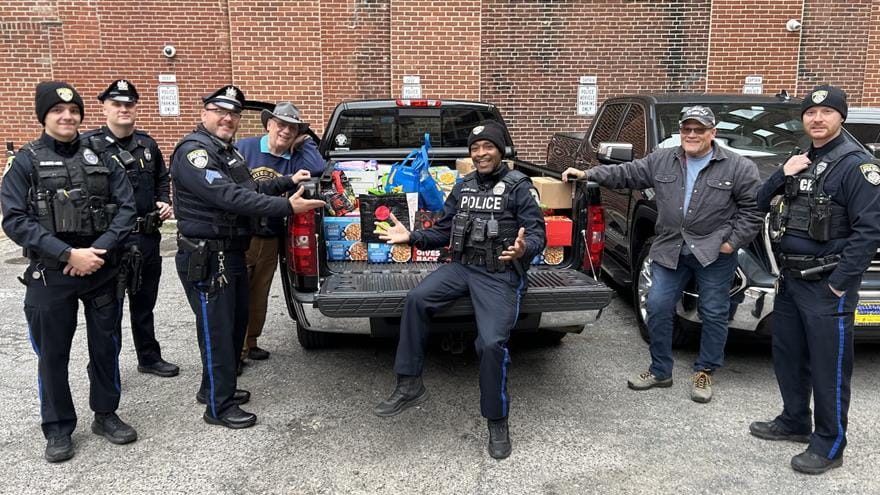Drexel Homecoming Through the Years: Queens, Parades and Beard-Growing Contests
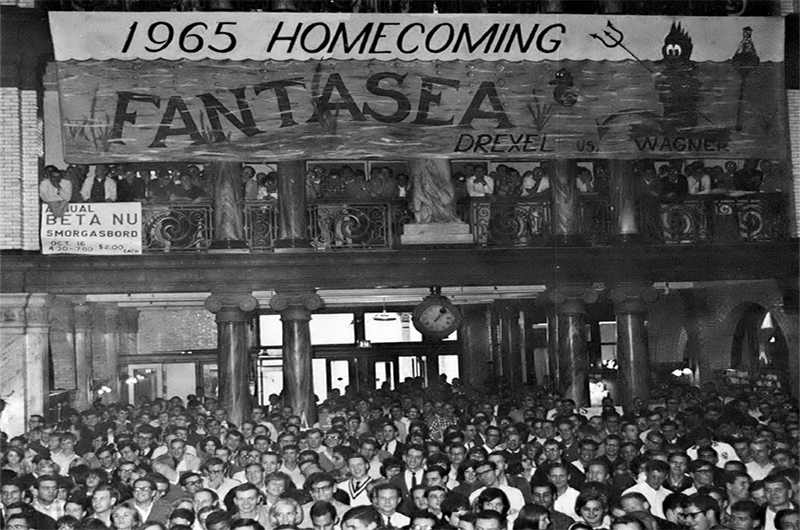
This article is part of the DrexelNow "Faces of Drexel" series honoring Drexel's history as part of the University-wide celebration of the 125th anniversary of Drexel's founding in 1891.
This week, Drexel will celebrate its annual Homecoming with the usual spirit rally, concert and basketball game. These traditions are somewhat similar to how past Drexel students would have celebrated the annual events — depending on the year, or decade.
The annual festivity has been revived and retired four times to create four different eras of Homecoming (and Homecoming traditions) in nine decades during Drexel’s 125 years.
Collegiate homecomings with football games and elected queens date back to the early 1900s. Drexel, on the other hand, started celebrating its “homecoming” of alums in the 1920s (minus the football games).

First called “Alumni Homecoming,” those events promoted more activities for alums than current students and were not centered on a sports game. Rather, alums could participate in a parade around Main Building’s Great Court, after which they would split up for program reunions before rejoining for a banquet and dance in the Great Court.
These meetups were usually held in the spring around Drexel’s annual May Festival, which was started in 1925 to celebrate May Day and elect a special “May Queen.” May Festival and Alumni Day activities were later held at the Drexel Lodge, a clubhouse on a 10-acre tract of land in Newtown Square, after trustee Anthony J. Drexel Paul, the founder’s grandson, donated it in 1931.
That changed in the mid 1930s, when sports started playing a larger role in Homecoming. Alumni returned to campus in November for a big football game and were given their own separate section in the stands at Drexel’s football field (today’s Vidas Athletic Complex). Alumni could play the women’s field hockey team in a match beforehand. Dinner — sometimes chicken and waffles — and a dance would follow. Fraternity houses would be open for alumni to relive their collegiate fun.
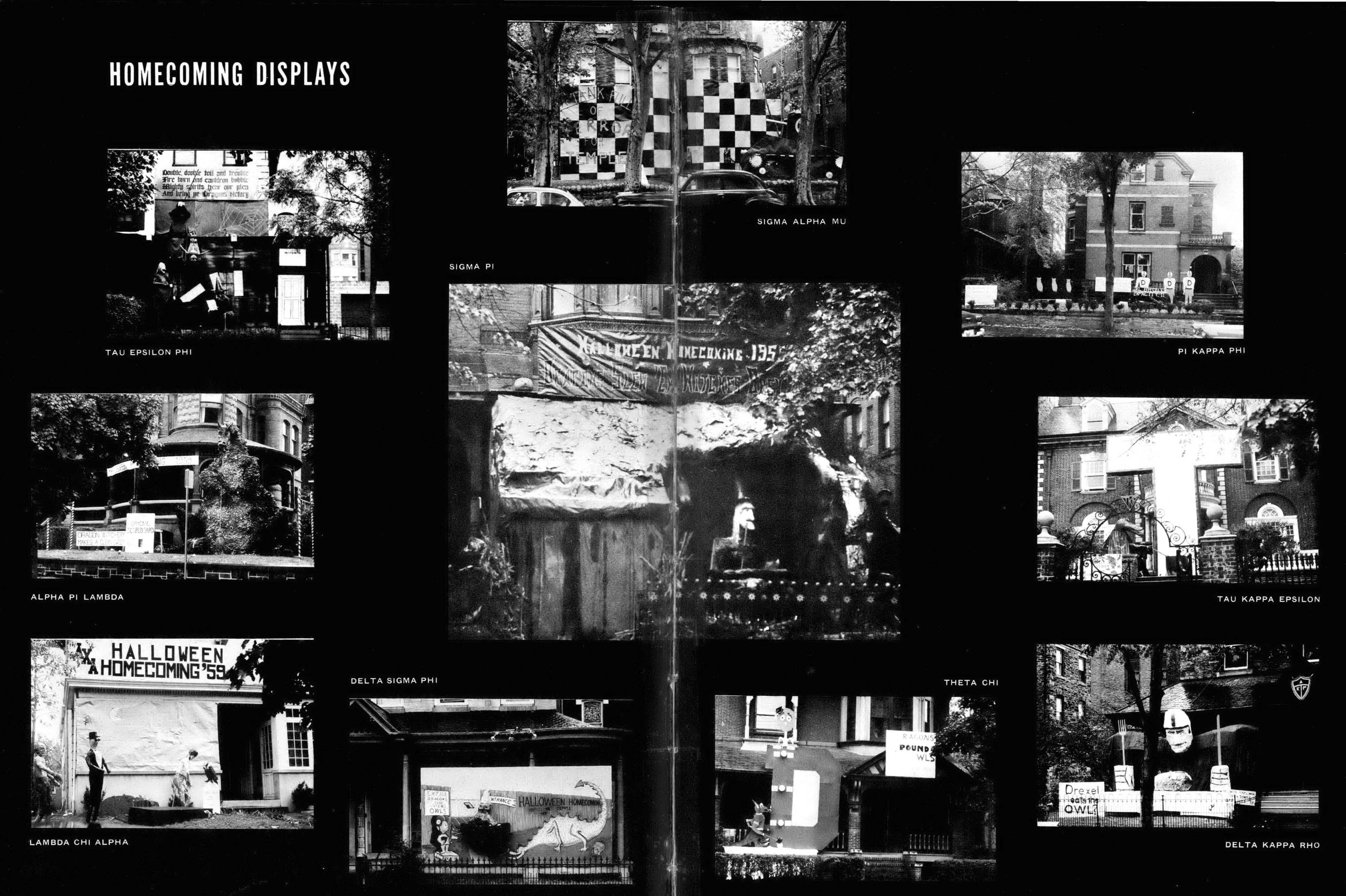
For Drexel’s 50th anniversary in 1941, Drexel welcomed more than 600 alumni — double what was expected — to campus to watch the football game and dance in the Great Court. During next year’s Homecoming, which was the first after the United States got involved in World War II, a service flag was dedicated at that year’s halftime to Drexel men in the service and those who had already died in action. The next year, with all athletic schedules cancelled, the Alumni Association hosted a dinner instead.
After the war, as students returned to campus and regular student and alumni activities resumed, Homecoming returned with new activities — some of which would remain for decades — like a parade from campus to the athletics field, open houses at fraternities and cheer competitions and skits between fraternities and sororities. The student body began touting these improved Homecoming events as “new,” starting with a “first” Homecoming in 1947.
That year marked the “Little Brown Jug” competition, in which fraternities vied to decorate their houses with the most school spirit. Theta Chi won the first year for building a two-foot tall inebriated male alumnus — complete with a blinking red nose — that stood in front of a “Welcome Grads” sign. Over the next 20 years, fraternities created displays depicting alumni and, more brazenly, what Drexel football players would do to their opponents in the big game: jousting them on a draw-bridge to protect a fair lady, beheading them in a guillotine, and even boiling them or grinding them in a 20-foot-tall meat grinder (for a Drexel dragon to eat, naturally).
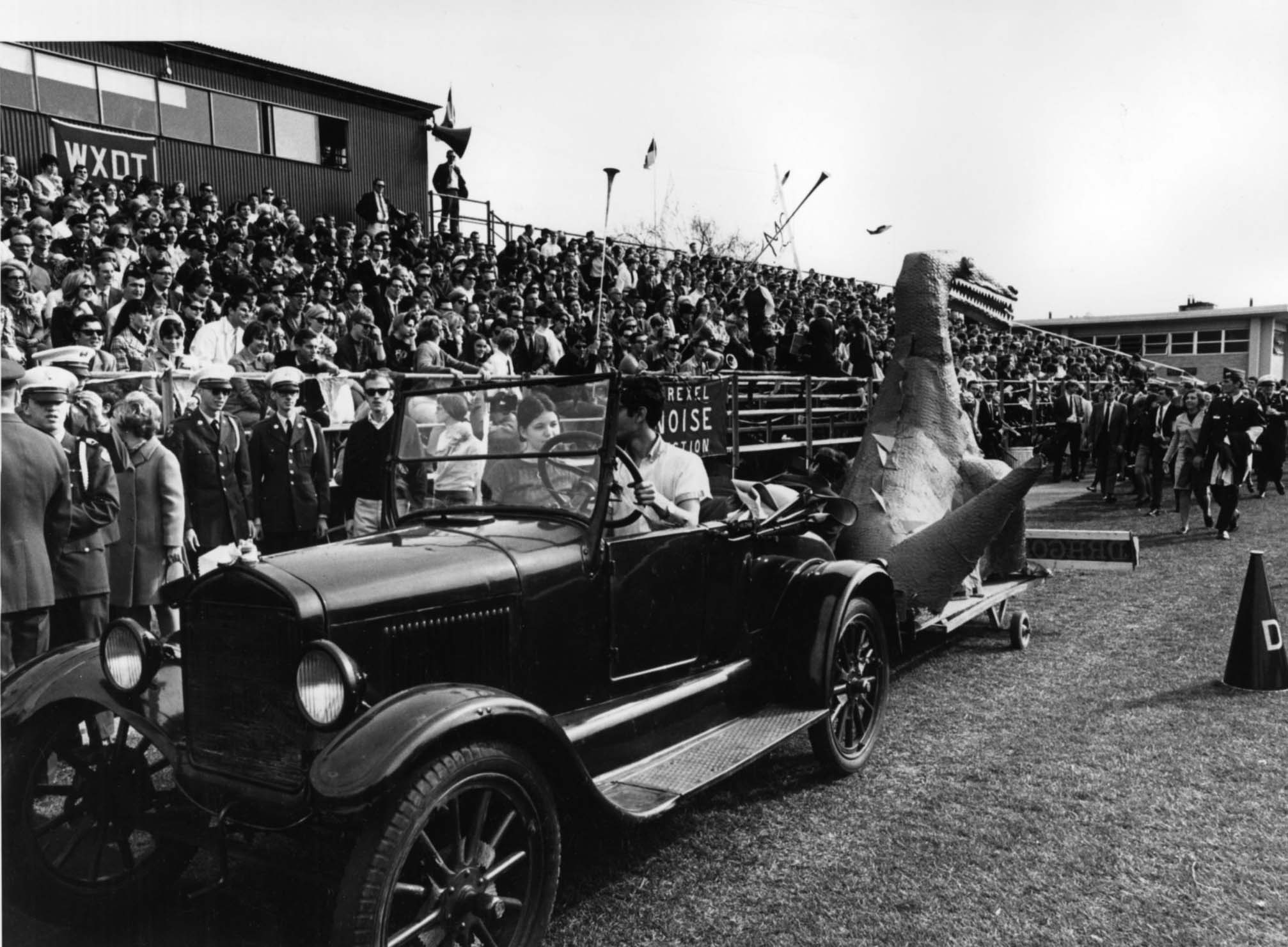
These displays, and the open houses, at fraternity houses were the only time that first-year fraternity hopefuls were permitted to visit the houses during the fall term. Homecoming also marked an exciting time for those students: after being forced to wear “dinks,” or blue and gold beanies, during the beginning of the school year, they could then burn the headwear during the football game’s halftime ceremony and take revenge against the upperclassmen through a Homecoming tug-of-war contest.
In 1951, Drexel elected its first Homecoming Queen, Jerry Cheuvreux ’52, as part of an effort to increase school spirit. A number of women would vie each year to get the most votes from their male students (women couldn’t vote until the late ’60s); ultimately, one queen, and her court, would be crowned during the halftime show.
By the end of the 1950s, Homecoming had started its beard-growing contest, which would continue for more than a decade. Participants were judged on originality, neatness and overall appearance (not length) to win first prize (a new electric shaver) and the “Fuzzy Man of the Year” title.
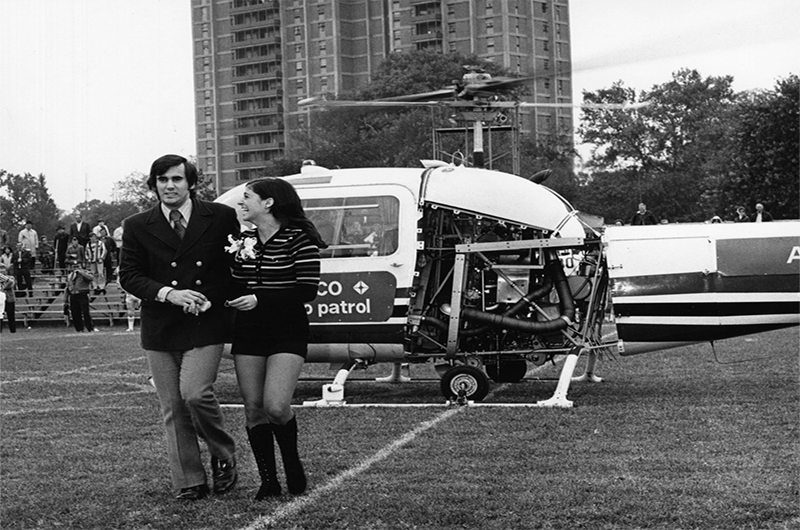
Homecoming in the ’60s, which featured the most activities and school spirit, introduced competitions: a pie-eating contest in 1963; spaghetti-eating and arm-wrestling contests in 1964; contests in doubloon-counting, clam-eating and rope-tying in 1965; and unicycle riding, root beer drinking and pickle-in-a-barrel contests in 1966.
The ’60s started the tradition of large-scale Homecoming concerts, starting in 1963 with a folk music hootenanny. In 1967, the Ramsey Trio led by Ramsey Lewis, one of the country’s top jazz pianists, performed at Homecoming. In 1970, Eric Burdon of the Animals and War was slated to play but dropped out over scheduling concerns; the Grateful Dead performed instead.
By then, Homecoming’s popularity was already declining. When the University’s football program closed in 1973, Homecoming continued for a few years but ultimately faded away.
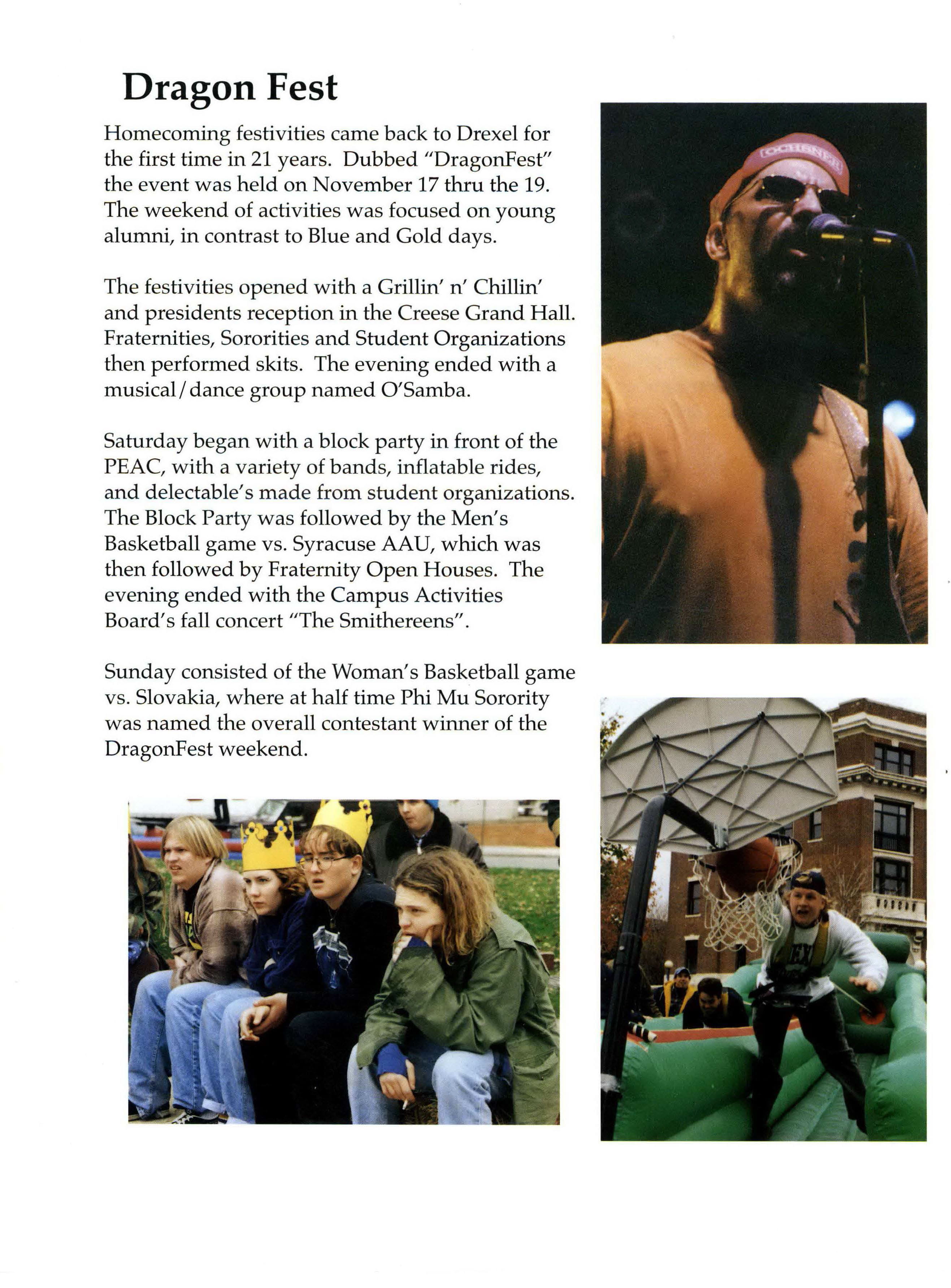
The tradition was revived two decades later with “DragonFest” in 1995 with the help of of Student Vice Provost for Student Life and Homecoming Committee Chairman Chris McCarthy '98, the current president of MTV. Held in January and centered on the University’s increasingly successful men’s basketball team, Homecoming featured traditions like floats and skits as well as new additions like a halftime laser show and a medieval dinner in which a “knight” and “maiden,” rather than a king and queen, were crowned. DragonFest continued for several years, but the tradition died out at the turn of the century.
In 2009, Homecoming returned for the third time in Drexel history with a more concentrated effort to bring alumni and students together on campus for a basketball game and a dance, among other activities.
In the 21st century, Drexel has graduated eight classes of Dragons who have experienced uninterrupted Homecomings during their time on campus. That means that recent alumni and current students can now join the ranks of students from decades past who can reflect upon their own Drexel Homecomings.
In This Article
Drexel News is produced by
University Marketing and Communications.

